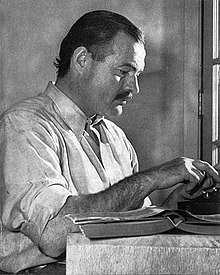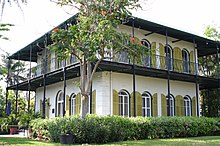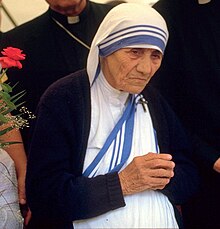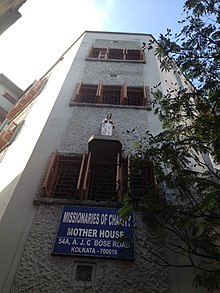October 21 is the 294th day of the year. There are 71 days remaining until the end of the year
 |
| A pallet with Portland cement |
Today's Highlight in History: 1824 –
Joseph Aspdin patents Portland cement.
Portland cement is the most common type of cement in general use around the world, used as a basic ingredient of concrete, mortar, stucco, and most non-specialty grout. It developed from other types of hydraulic lime in England in the mid 19th century and usually originates from limestone. It is a fine powder produced by heating materials in a kiln to form what is called clinker, grinding the clinker, and adding small amounts of other materials.
Joseph Aspdin (December? 1778 – 20 March 1855) was an English cement manufacturer who obtained the patent for Portland cement on 21 October 1824.
 |
| A 10 MW cement mill, producing cement at 270 tonnes per hour |
Joseph Aspdin (or Aspden) was the eldest of the six children of Thomas Aspdin, a bricklayer living in the Hunslet district of Leeds, Yorkshire. He entered his father's trade, and by 1817 he had set up in business on his own in central Leeds. He must have experimented with cement manufacture during the next few years, because on 21 October 1824 he was granted the British Patent BP 5022 entitled An Improvement in the Mode of Producing an Artificial Stone, in which he coined the term "Portland cement" by analogy with the Portland stone, an oolitic limestone that is quarried on the channel coast of England, on the Isle of Portland in Dorset.
Aspdin called the product Portland cement because set mortar made from it resembled “the best Portland stone". Portland stone was the most prestigious building stone in use in England at the time. The patent clearly does not describe the product recognised as Portland cement today. The product was aimed at the market for stuccos and architectural pre-cast mouldings, for which a fast-setting, low-strength cement was required. It was fired at low temperature (below 1250 °C) and therefore contained no alite.
However, Aspdins' cement was nothing like modern Portland cement but was a first step in the development of modern Portland cement, called a proto-Portland cement. Aspdins son William Aspdin left his fathers company and in his own cement manufacturing apparently accidentally produced calcium silicates in the 1840s, a middle step in the development of Portland cement. In 1848, William Aspdin further improved his cement; in 1853, he moved to Germany where he was involved in cement making. William Aspdin made what could be called meso-Portland cement (a mix of Portland cement and hydraulic lime).
Isaac Charles Johnson further refined the production of meso-Portland cement (middle stage of development) and claimed to be the real father of Portland cement. John Grant of the Metropolitan Board of Works in 1859 set out requirements for cement to be used in the London sewer project. This became a specification for Portland cement. The next development with the manufacture of Portland cement was the introduction of the rotary kiln patented by German Friedrich Hoffmann called a Hoffmann kiln for brick making in 1858 and then Frederick Ransome in 1885 (U.K.) and 1886 (U.S.) which allowed a stronger, more homogeneous mixture and a continuous manufacturing process.
The Hoffman "endless" kiln which gave "perfect control over combustion" was tested in 1860 and showed the process produced a better grade of cement. This cement was made at the Portland Cement fabrik Stern at Stettin, which was the first to utilize a Hoffman kiln. It is thought that the first modern Portland cement was made there. The Association of German Cement Manufacturers issued a standard on Portland cement in 1878.
Portland cement is caustic so it can cause chemical burns, the powder can cause irritation or with severe exposure lung cancer, and contains some toxic ingredients such as silica and chromium. Environmental concerns are the high energy consumption required to mine, manufacture, and transport the cement and the related air pollution including the release of greenhouse gasses (e.g., carbon dioxide), dioxin, NOx, SO2, and particulates.
.Wikipedia
World Events
1774 – First display of the word "Liberty" on a flag, raised by colonists in Taunton, Massachusetts in defiance of British rule in Colonial America.
1797 – In Boston Harbor, the 44-gun United States Navy frigate USS Constitution is launched.
1816 – The Penang Free School is founded in George Town, Penang, Malaysia, by the Rev Hutchings, the oldest English-language school in Southeast Asia.
1824 – Joseph Aspdin patents Portland cement.
1854 – Florence Nightingale and a staff of 38 nurses are sent to the Crimean War.
1879 – Thomas Edison invents a workable electric light bulb at his laboratory in Menlo Park, N.J. which was tested the next day and lasted 13.5 hours. This would be the invention of the first commercially practical incandescent light. Popular belief is that he invented the first light bulb, which he did not.
1895 – The Republic of Formosa collapses as Japanese forces invade.
1902 – In the United States, a five-month strike by United Mine Workers ends.
1910 – HMS Niobe arrives in Halifax Harbour to become the first ship of the Royal Canadian Navy.
1921 – President Warren G. Harding delivers the first speech by a sitting U.S. President against lynching in the deep South.
1921 – George Melford's silent film, The Sheik, starring Rudolph Valentino, premiers.
1931 – The Sakurakai, a secret society in the Imperial Japanese Army, launches an abortive coup d'état attempt.
1940 – The first edition of the Ernest Hemingway novel For Whom the Bell Tolls is published.
1941 – World War II: In Kragujevac, Serbia, German Wehrmacht soldiers butcher about 7,000 citizens, including schoolchildren and professors.
1945 – Women's suffrage: Women are allowed to vote in France for the first time.
1956 – Mau Mau Uprising: Kenyan rebel leader Dedan Kimathi is captured by the British Army, signalling the ultimate defeat of the rebellion, and essentially ending the British military campaign.
1959 – In New York City, the Solomon R. Guggenheim Museum, designed by Frank Lloyd Wright, opens to the public.
1959 – U.S. President Dwight D. Eisenhower signs an executive order transferring Wernher von Braun and other German scientists from the United States Army to NASA.
1965 – Comet Ikeya-Seki approaches perihelion, passing 450,000 kilometers (279,617 miles) from the sun.
1966 – Aberfan disaster: A slag heap collapses on the village of Aberfan in Wales, killing 144 people, mostly schoolchildren.
1967 – Vietnam War: More than 100,000 war protesters gather in Washington, D.C.. A peaceful rally at the Lincoln Memorial is followed by a march to The Pentagon and clashes with soldiers and United States Marshals protecting the facility. Similar demonstrations occurred simultaneously in Japan and Western Europe.
1969 – A coup d'état in Somalia brings Siad Barre to power and establishes a socialist republic in Somalia.
1977 – The European Patent Institute is founded.
1978 – Australian civilian pilot Frederick Valentich vanishes in a Cessna 182 over the Bass Strait south of Melbourne, after reporting contact with an unidentified aircraft.
1979 – Moshe Dayan resigns from the Israeli government because of strong disagreements with Prime Minister Menachem Begin over policy towards the Arabs.
1981 – Andreas Papandreou becomes Prime Minister of Greece, ending an almost 50-year long system of power dominated by conservative forces.
1987 – Jaffna hospital massacre is carried out by Indian Peace Keeping Force in Sri Lanka killing 70 ethnic Tamil patients, doctors and nurses.
1994 – North Korea nuclear weapons program: North Korea and the United States sign an agreement that requires North Korea to stop its nuclear weapons program and agree to inspections.
1994 – In Seoul, 32 people are killed when the Seongsu Bridge collapses.
2005 – Images of the dwarf planet Eris are taken and subsequently used in documenting its discovery by the team of Michael E. Brown, Chad Trujillo, and David L. Rabinowitz.
2012 – A shooting at a spa in Brookfield, Wisconsin, leaves four people dead, including the shooter.
2013 – Record smog closes schools, roadways, and the airport in Harbin, China.
















